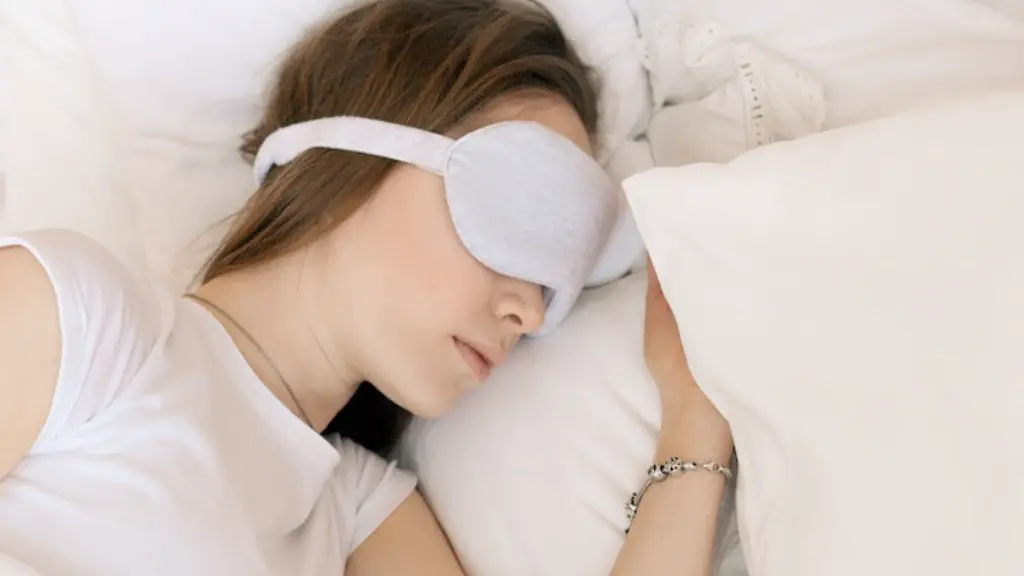A blind person can dream just like a sighted person. Dreams are created by the subconscious mind, which is not affected by a person’s ability to see. The only difference may be in the content of the dreams. A blind person may have dreams that focus on the senses of hearing, smell, touch, and taste.
There is no definitive answer to this question as it is not known how dreams are generated. It is possible that people who are blind from birth may dream in pictures, as they would have no frame of reference for anything else. However, it is also possible that people who are blind do not dream in pictures at all, or that their dreams are entirely different from those of people who can see.
What does a blind person dream look like?
While people blind since birth do dream in visual images, they don’t do it as often or as intensely as sighted people. Instead, they dream more often and more intensely in sounds, smells, and touch sensations.
Blind people can and do dream, though their dreams can be somewhat different from those of sighted people. The type of imagery a blind person has in their dreams can also vary, depending on when they lost their sight.
Can a deaf person hear in their dreams
The study found that people with hearing impairments are more likely to hear sounds in their dreams than people who can hear. This is likely because people with hearing impairments rely on their sense of hearing more than people who can hear. Therefore, their brains are more attuned to sounds. The study also found that people with hearing impairments are more likely to have nightmares than people who can hear. This may be because people with hearing impairments are more likely to be afraid of loud noises.
Even if a person loses or severely damages part of their eye, they can still produce tears as long as the tear duct remains intact. This is a amazing ability that tears have and it is something that we should all be thankful for.
Do blind people lose memories?
Claire’s story is a reminder that our visual memory can fade over time, even if we’ve been able to see our whole lives. It’s important to keep our minds active and engaged in order to maintain our mental faculties as we age.
There is a theory that the human brain is incapable of creating a new face, and that every person we dream of is someone we have either known personally or come across before. This theory is based on the idea that the brain is a pattern-seeking machine, and that it is more likely to recognize and recall a familiar face than to create a new one. While this theory may seem plausible, there is no scientific evidence to support it.
Do blind people see pure black?
Blind people cannot see anything, not even the color black. We do not have any sensation for magnetic fields or ultraviolet light, so we don’t know what we’re missing. To try to understand what it might be like to be blind, think about how it “looks” behind your head.
There is a big difference between being totally blind and having low vision. A person who is totally blind won’t be able to see anything, but a person with low vision may be able to see light, colors, and shapes. However, they may have trouble reading street signs, recognizing faces, or matching colors to each other.
Do blind people see pure darkness
People who have lost their vision can have a wide range of reactions. Some people have described experiencing pure darkness, as if they were in a cave. Some see flashes or have strong visual illusions, for example, familiar forms, shapes, and colors, or lights.
Sign language is the primary form of communication for people who are deaf or hard of hearing. It is a visual form of communication that uses hand gestures, body language, and facial expressions to convey meaning. Sign language is also a form of communication that is used by people who are deaf or hard of hearing.
What percentage of people don’t remember their dreams?
Did you know that people have several dreams each night, but probably forget about 95 percent of them? Here are 10 more fascinating facts about dreaming that you may not know:
1. Dreams can last anywhere from a few seconds to up to an hour.
2. The average person has around 12 dreams per night.
3. Dreams are usually most vivid during the REM (rapid eye movement) stage of sleep.
4. It’s normal to dream about things that have happened to you during the day.
5. Dreams can sometimes be a way for your subconscious to process emotions or work through problems.
6. Everyone has dreams, even if they don’t remember them.
7. You can have nightmares even if you’re not asleep – they’re called waking nightmares.
8. Sleep paralysis is when you can’t move or speak while you’re falling asleep or waking up – and it can be accompanied by hallucinations.
9. Lucid dreaming is when you know you’re dreaming and can sometimes control the dream.
10. There are a number of disorders that can cause abnormal dreaming, such as sleep apnea and narcolepsy.
There is no need to worry about sleep hallucinations. They typically occur when your brain is in a partial dreaming state and are harmless. Visual sleep hallucinations are the most common, but they can also be auditory. If you hear a voice or voices, they will usually only say something brief, such as your name.
Do blind people get turned on
It is a common misconception that blind people do not experience sexual attraction because of their inability to see, but this could not be further from the truth. In reality, blind people have happy and successful sexual relationships just like everyone else, and their blindness does not have to be a hindrance. If anything, being blind can actually enhance the sexual experience by heightening the other senses, such as touch and hearing. So next time you see a blind person, don’t assume that they are not sexually active – they very well could be!
Braille is a tactile reading and writing system that enables blind and visually impaired people to read and write. The system comprises of raised dots that are read with the fingertips and used to form words. Braille is an essential tool for Blind and Visually impaired people to access the written word. It provides them with the ability to learn, work and participate fully in society.
Can a blind person have someone elses eyes?
Although there is no way to transplant an entire eye, ophthalmologists can transplant a cornea. When someone says they are getting an “eye transplant,” they are most likely receiving a donor cornea, which is the clear front part of the eye that helps focus light so that you can see.
There are a few differences between blind and sighted persons when it comes to working memory. For instance, blind persons tend to score 14 IQ points higher, while visually impaired persons only score 3 IQ points higher. On the other hand, the opposite pattern was found for verbal comprehension. These findings suggest that there are some cognitive differences between blind and sighted persons.
Final Words
There is no definitive answer to this question as it is different for every blind person. Some report never seeing anything in their dreams, while others claim to see images, shapes, or colors. It is likely that those who do see something in their dreams are able to do so because they had some level of vision at some point in their life.
There is no scientific evidence to support the claim that blind people see in their dreams. However, many blind people report dreaming in ways that suggest they may be able to sense light and movement. It is possible that blind people dream in ways that are different from sighted people, but further research is needed to confirm this.





